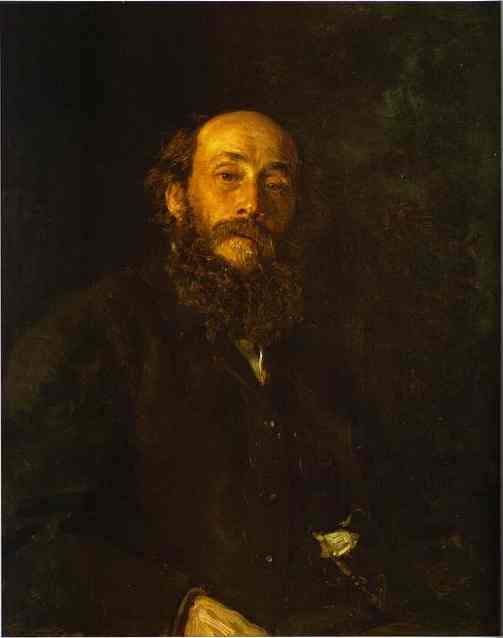The directory «Artists»
Gay Nikolay Nikolayevich
(1831—1894)

Nikolay Nikolayevich Gay, a Russian artist, was born into a noble family of French origin: his great-grandfather emigrated from France at the end of the 18th century during the Great French Revolution. The parents of Gay died when he was still a child. He was brought up by his serf nurse, who taught him, as he later said, compassion for the humiliated and insulted, a keen sense of other people’s sorrows.
Gay entered the St. Petersburg Academy of Arts in 1850, after having studied physics and math in a University for some time. In the Academy he studied in the class of professor Piotr Basin, a painter of historical subjects and portraits. But, according to Gay himself, he was mainly influenced by Karl Brulloff. This influence can be traced in Gay’s student works, such as Leila and Khadji-Abrek (1852), The Judgment of King Solomon (1854) and Achilles Lamenting the Death of Patroclus (1855). All works, though rather romantic, are fulfilled in accordance with the demanding principles of the classicism of the Academy. He graduated from the Academy in 1857 with a Major Gold Medal for his picture The Witch of Endor Calling Up the Spirit of the Prophet Samuel. During the next 6 years of studies abroad he visited Germany, Switzerland, France and in 1860 settled in Italy. His interest lay in historical genre and portraiture.
In 1863, he returned to St. Petersburg with the picture Last Supper (1863), which gave rise to much interest. Many painters turned to this subject, with Leonardo da Vinci and Tintoretto among them. Gay found his own interpretation: he emphasized the theme of discord among those who had formerly shared the same views. So the feelings of the participants in this tragic conflict became especially prominent in his work. Gay put aside the canons of classicism, but his success was so great (Emperor Alexander II himself bought the picture), that the Academy of Arts had to award the artist a title of professor.
Next year Gay left for Italy again and spent several years there, continuing to work on Bible subjects, landscapes and portraits. He painted the portraits of Alexander Herzen (1867), his favorite Russian writer, and of the latter’s friends. Upon his return to St. Petersburg in 1870, he became one of the founders and leaders of the Society of Traveling Art Exhibitions.
He turned to Russian history. The canvas Peter the Great Interrogates Tsarevich Alexey at Peterhof (1871) again brought him success. Again the subject of the picture is a real historical conflict of father and son, each of whom had his own truth. His other historical pictures were not successful with spectators and critics. Gay took his fiasco very hard, failing to believe in his own talent. In 1876, he bought an estate and moved there; he stopped painting and went into farming and agriculture. Some time later he got acquainted with Leo Tolstoy and became apologist of his philosophy.
In early 1880, he returned into art. Now the Bible subjects prevailed. He made exceptions only for portraits; he painted a lot of them even for very low commissions, believing that portraits must be available to everyone. Among his portraits the most famous are those of author Saltykov-Shchedrin, poet N. Nekrasov (both 1872), Leo Tolstoy and members of his family.
His latest paintings on Bible subjects: Quod Est Veritas? Christ and Pilate (1890) was expelled from the exhibition for blasphemy; The Judgment of the Sanhedrin: He is Guilty! (1892) was not admitted to the annual Academy of Arts exhibition; The Calvary (Golgotha) (1893) remained unfinished; The Crucifixion (1894) was banned by Alexander III.
The artist died abruptly in March 1894 in his estate.
USSR, 1945, Aleksander Herzen
USSR, 1945, Aleksander Herzen
USSR, 1953, Lev Tolstoy
USSR, 1957, Herzen and Ogarev
USSR, 1962, Aleksander Herzen
USSR, 1930,  Lev Tolstoy
Lev Tolstoy
USSR, 1990.12.13,  Belinsky's museum in Belinsky
Belinsky's museum in Belinsky